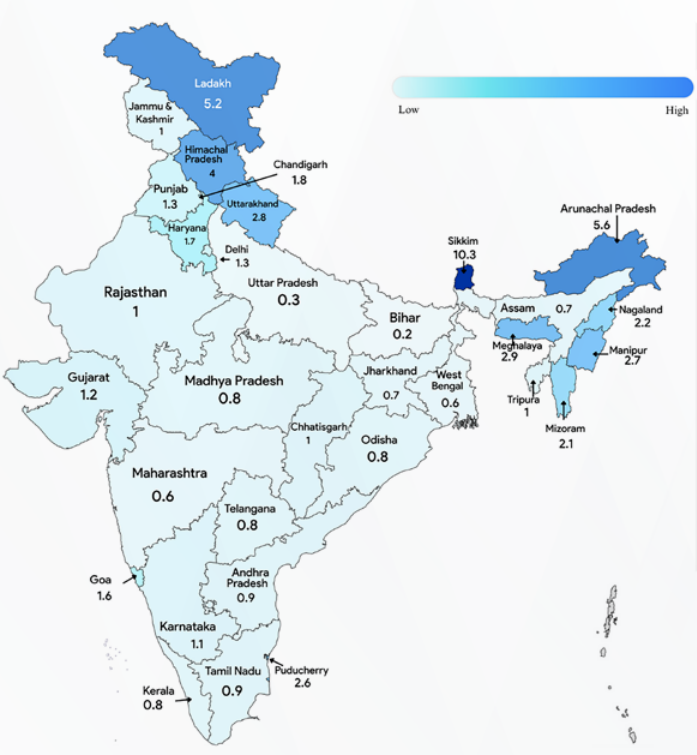Important Facts For Prelims
Expenditure on Higher Education
- 12 Feb 2025
- 3 min read
Why in News?
The NITI Aayog released a report titled ‘Expanding Quality Higher Education through States and State Public Universities’.
- It is a first-of-its kind policy document in the higher education sector focused specifically on States and State Public Universities (SPUs).
What are the Key Findings of the NITI Aayog Report on Higher Education?
- Education Expenditure:
- Overall Expenditure: Jammu & Kashmir (8.11%) leads in education spending, followed by Manipur (7.25%), while Delhi allocates significantly less (1.67%).
- Higher Education Expenditure: Bihar ranks highest at 1.56%, followed by Jammu & Kashmir (1.53%) and Manipur (1.45%) while Telangana (0.18%) has the lowest percentage.
- Per Youth Education Spending: Kerala, Tamil Nadu, Maharashtra, Andhra Pradesh, and Telangana are among the top spenders on higher education, while Rajasthan, Punjab, and Chhattisgarh lag behind.
- University Density: The national average university density (universities per 1 lakh eligible population (18-23 years of age) in a state) is 0.8.
- Sikkim has the highest university density (10.3), followed by Arunachal Pradesh, Ladakh, and Himachal Pradesh, while Bihar has the lowest (0.2).
- Gender Parity: Kerala, Chhattisgarh, and Himachal Pradesh have higher female enrolment, while Chandigarh, Mizoram, and Andaman & Nicobar Islands have balanced enrolments.
Note:
- According to the Economic Survey 2024-25, Education expenditure grew by 12% annually, reaching Rs 9.2 lakh crore in FY25.
- Dropout rates fell to 1.9% (primary) and 14.1% (secondary), while higher education enrolment rose 26.5% (2014-2022), raising Gross Enrollment Ratio (GER) to 28.4%.
- Higher education GER needs to reach 50% by 2035.
- Digital divide persists, with lower internet access in rural areas (55%) compared to urban (69%).
- Dropout rates fell to 1.9% (primary) and 14.1% (secondary), while higher education enrolment rose 26.5% (2014-2022), raising Gross Enrollment Ratio (GER) to 28.4%.
UPSC Civil Services Examination, Previous Year Question (PYQ)
Prelims
Q. Which of the following provisions of the Constitution of India have a bearing on Education? (2012)
- Directive Principles of State Policy
- Rural and Urban Local Bodies
- Fifth Schedule
- Sixth Schedule
- Seventh Schedule
Select the correct answer using the codes given below:
(a) 1 and 2 only
(b) 3, 4 and 5 only
(c) 1, 2 and 5 only
(d) 1, 2, 3, 4 and 5
Ans: (d)





